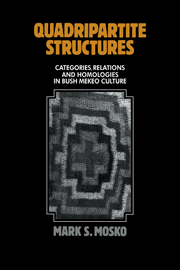Book contents
- Frontmatter
- Contents
- List of figures, tables, and maps
- Preface
- 1 Introduction: the problem and the people
- 2 Between village and bush
- 3 Body and cosmos
- 4 Sex, procreation, and menstruation
- 5 Male and female
- 6 Kin, clan, and connubium
- 7 Feasts of death (i): de-conception and re-conception
- 8 Feasts of death (ii): the sons of Akaisa
- 9 Tikopia and the Trobriands
- 10 Conclusions: indigenous categories, cultural wholes, and historical process
- Appendixes
- Notes
- Bibliography
- Index
7 - Feasts of death (i): de-conception and re-conception
Published online by Cambridge University Press: 04 August 2010
- Frontmatter
- Contents
- List of figures, tables, and maps
- Preface
- 1 Introduction: the problem and the people
- 2 Between village and bush
- 3 Body and cosmos
- 4 Sex, procreation, and menstruation
- 5 Male and female
- 6 Kin, clan, and connubium
- 7 Feasts of death (i): de-conception and re-conception
- 8 Feasts of death (ii): the sons of Akaisa
- 9 Tikopia and the Trobriands
- 10 Conclusions: indigenous categories, cultural wholes, and historical process
- Appendixes
- Notes
- Bibliography
- Index
Summary
To this day, the most authoritative anthropological treatments of the symbolism and ritual of death remain Hertz's essay “The Collective Representation of Death” (1960:27–85) and Van Gennep's study The Rites of Passage (1960). Although these classic interpretations differ widely, in one sense the two are very similar. Hertz and Van Gennep each convincingly claims to unearth a particular structure or pattern of cross-cultural if not universal validity from among the diversity of mortuary ritual in the societies they study. Where they differ is in the exact constitution of their respective structures.
Although I cannot but agree that it is possible to identify some elements of both Hertz's and Van Gennep's formulations in the ethnographic elements of Bush Mekeo mortuary ritual and feasting, my principal interest and intentions in this chapter lie elsewhere. Throughout this work, I have tried to reveal a number of structural homologies pervading all contexts of the indigenous culture, and I shall continue to do so as consistently as possible here regarding Bush Mekeo conceptualizations of death and mourning. Therefore, I shall not be explictly concerned with establishing relations between corpse, soul, and survivors, or with portraying relations between funerary and other rites of passage, except insofar as they contribute toward eliciting the structure of category distinctions found generally throughout the culture and specifically in mortuary ceremony and feasting.
- Type
- Chapter
- Information
- Quadripartite StructuresCategories, Relations and Homologies in Bush Mekeo Culture, pp. 150 - 181Publisher: Cambridge University PressPrint publication year: 1985



